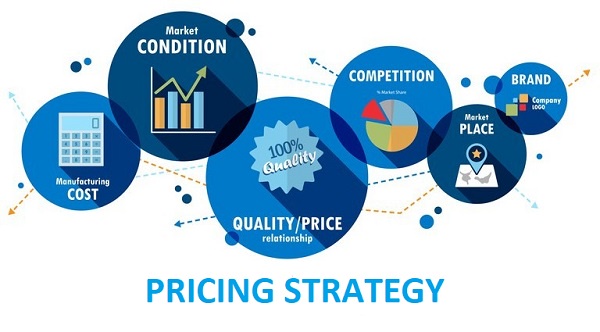Pricing is a critical component of any business strategy, influencing not only revenue but also market positioning, customer perception, and profitability. In today’s dynamic market environment, where consumer preferences evolve rapidly and competition intensifies, adopting smart pricing strategies tailored to different stages of the product lifecycle is essential for sustained success. This article explores the significance of smart pricing strategies across various stages of the product lifecycle and provides actionable insights for businesses to maximize value and drive growth.
Understanding the Product Lifecycle:
The product lifecycle encompasses several distinct stages, each presenting unique challenges and opportunities for pricing strategies. These stages typically include introduction, growth, maturity, and decline. At each stage, businesses must adapt their pricing approaches to align with changing market dynamics, customer preferences, and competitive pressures.
- Introduction Stage:
During the introduction stage, when a new product enters the market, pricing decisions play a crucial role in establishing initial market acceptance and capturing early adopters. Smart pricing strategies for this stage often involve:
- Penetration Pricing: Setting an initially low price to quickly gain market share and stimulate demand.
- Price Skimming: Charging a premium price to capitalize on early adopters’ willingness to pay for innovation and exclusivity.
- Freemium Model: Offering a basic version of the product for free while charging for premium features or upgrades.
By strategically pricing the product during the introduction stage, businesses can create momentum, generate buzz, and lay the foundation for future growth.
- Growth Stage:
As the product gains traction and enters the growth stage, pricing strategies shift towards maximizing market share and revenue while fending off competition. Key pricing strategies for this stage include:
- Competitive Pricing: Adjusting prices to remain competitive while maintaining profitability.
- Value-Based Pricing: Pricing based on the perceived value delivered to customers, taking into account features, benefits, and differentiation.
- Dynamic Pricing: Using real-time data and market insights to adjust prices dynamically based on demand, seasonality, and competitor actions.
During the growth stage, businesses must continuously monitor market dynamics and adapt pricing strategies to capitalize on emerging opportunities and address competitive threats.

- Maturity Stage:
In the maturity stage, the market becomes saturated, and competition intensifies, requiring businesses to focus on optimizing profitability and retaining market share. Smart pricing strategies for this stage may include:
- Price Differentiation: Offering tiered pricing or bundled packages to cater to different customer segments and maximize revenue.
- Discount Strategies: Implementing targeted discounts, promotions, and loyalty programs to incentivize repeat purchases and maintain customer loyalty.
- Cost Leadership: Streamlining operations and optimizing costs to maintain competitive pricing while preserving profit margins.
During the maturity stage, businesses must leverage data analytics and consumer insights to identify opportunities for price optimization and maintain relevance in a crowded market.
- Decline Stage:
As the product reaches the decline stage of the lifecycle, sales decline, and businesses face the challenge of managing pricing to extract maximum value from remaining demand while preparing for product phase-out or replacement. Smart pricing strategies for this stage may include:
- Harvesting: Gradually reducing prices to liquidate remaining inventory and maximize cash flow before discontinuing the product.
- Niche Targeting: Identifying niche markets or segments where the product still holds value and pricing accordingly to serve specialized needs.
- Product Bundling: Bundling the declining product with complementary offerings to extend its lifecycle and extract additional revenue.
In the decline stage, businesses must carefully manage pricing decisions to minimize losses and transition resources towards more promising opportunities in their product portfolio.
Conclusion:
Smart product pricing strategies are essential for navigating the complexities of the product lifecycle and maximizing value at every stage. By aligning pricing decisions with market dynamics, customer preferences, and competitive pressures, businesses can optimize revenue, profitability, and market positioning. Whether introducing a new product, scaling growth, sustaining maturity, or managing decline, adopting smart pricing strategies is key to driving sustainable growth and maintaining a competitive edge in today’s dynamic business landscape.


No comments yet